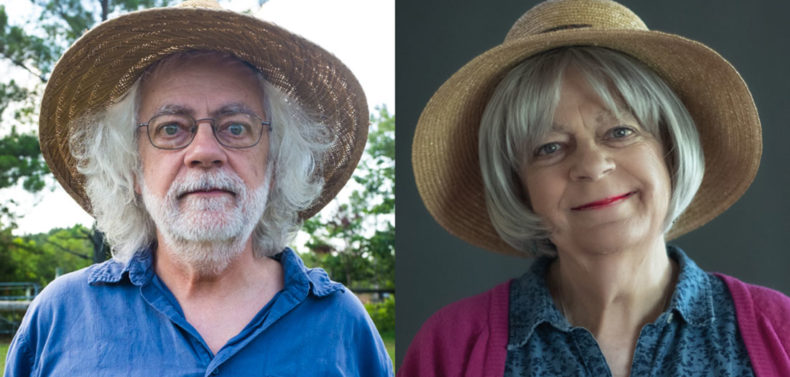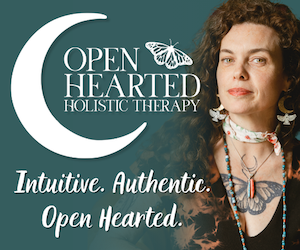Penny Noah uses her camera as if it was an organ of her own body—sensing, processing and communicating with the world around her. Last fall through the Athens Institute for Contemporary Art, for example, Noah presented “Masked/Unmasked,” an exhibition and accompanying publication of black-and-white portraits that explored the nuances of facial expression and shared personal reflections on mask-wearing during the pandemic. Earlier this year at the Lyndon House Arts Center, several of her shots depicting activism and rallies were displayed in “Athens Together,” an exhibition that contemplated how street photography can help inform the understanding of social and political movements.
In her newest exhibition “Transforming,” Noah shifts her creative focus from holding a mirror up to the public to investigating her own appearance and identity as she begins her gender transition. Triptychs combine portraits of herself as she is today with how she once was as David, while other old family photos are collaged to include her present self. Also a talented painter, illustrator and writer, Noah uses her artwork as a means of self-expression, documentation and affirmation.
An opening reception for “Transforming” will be held at tiny ATH gallery on Friday, June 11 from 6–9 p.m. The gallery will host a virtual artist talk with Noah using Instagram Live (@tinyathgallery) on Tuesday, June 15 at 7:30 p.m. In-person viewing is also available during Third Thursday on June 17 from 6–9 p.m. or by emailing [email protected] to schedule an appointment.

Flagpole: For decades now, you’ve been using photography to capture, explore and engage with the world around you. What has it been like to turn the lens around and document your own personal transformation through photography? Do you find selfies empowering?
Penny Noah: For me, documenting the trans process is part of the process itself. Partly because making images is important to me, and partly because gender is often, too often, understood visually. So the intersection of gender and photography is powerful. And there’s a long history of that intersection, from Brassai to Nan Goldin to Cindy Sherman and beyond.
Also, my photo skills (thank you, Photoshop!) help me see myself both as I am and as I want to be. It’s an opportunity to use the camera to ask questions about, reflect on, document and creatively explore my identity. Though I’m not too sure what “identity” means at this point.
Sharing selfies online does seem to be part of the trans experience. They’re like the bitcoin of portraiture, equal and interchangeable in their function, which is to affirm the new self. Or maybe something like a religious token, dropped regularly at the social altar for a blessing. At least, that’s how I use them.
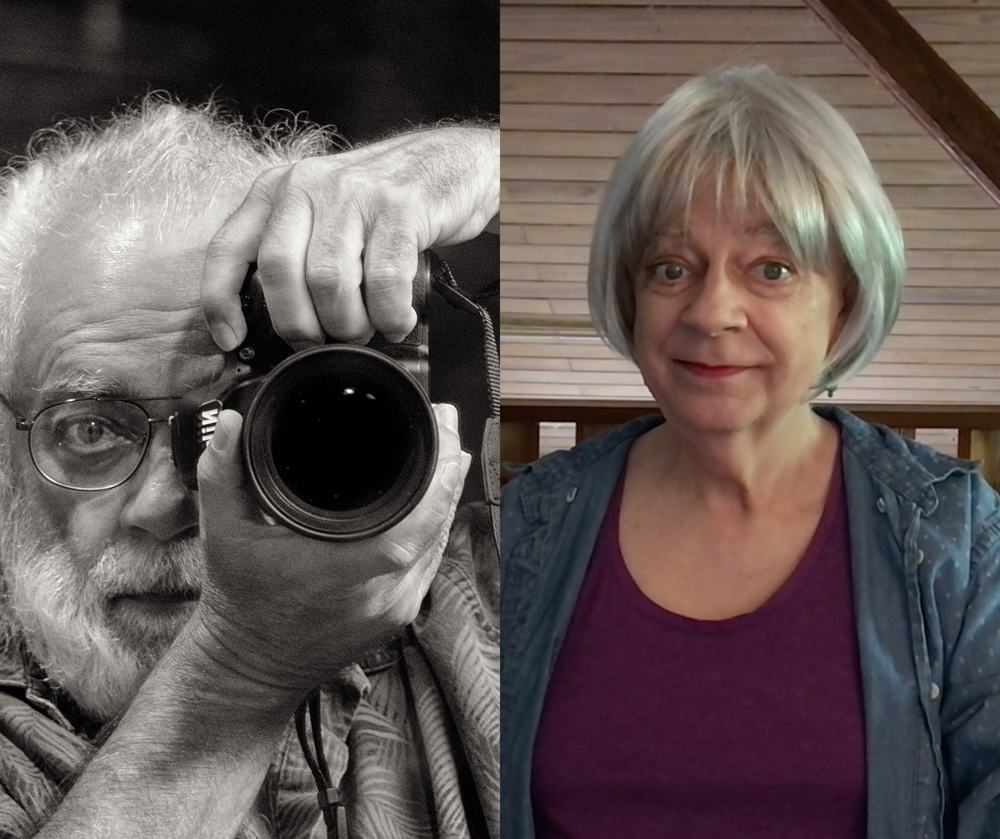
FP: Your triptychs and other past-and-present portrait pairings demonstrate how dramatically your physical appearance has changed after starting HRT only a few months ago. What have been the most surprising or exciting aspects of your transition so far?
PN: I’m pretty amazed that my elderly body can still be chemically persuaded to do hormonal tricks, and how quickly. It’s also amazing how subtle the changes can be while still triggering a new response to my appearance. I get “ma’am” about as often as I get “sir” in public encounters these days, and not always because I’m consciously presenting one way or the other.
One of the best discoveries during transition has been a newfound sense of freedom from the binary restrictions of our culture. It’s possible to let go of the toxic demands that gender roles impose on us, to move more freely in a human space rather than a male or female one. Perhaps it’s like drastically remodeling your house; where I once lived in a single small room, now I’m free to inhabit a dozen different rooms. This is real wealth.
Transitioning is like what I imagine a religious conversion might be: Everything is changed, though everything is still the same—we just see the world in a new light. Or it’s like learning to speak a new language—at some point, you start to dream in that language and the world is altered. Or maybe it’s like taking a powerful drug (actually, it is in fact the taking of a powerful drug) that expands the mind beyond the small categories in which we usually live.
FP: A few of the works in “Transforming” depict old family photos that have been edited to include a recent portrait of you. What is it like to revisit these memories, and what role or purpose does manipulating these images serve?
PN: Family photos have always been powerful documents to me; I keep a small bundle of them. Some of them seem genuinely interesting as photographs, but their real power is in the stored emotional energy they radiate. They rarely show me looking happy. Mostly I see evidence of a dysfunctional family in them, and clues about my developing dysphoria. Oddly enough, and this goes a long way to explaining my adult engagement with photography, looking at them reminds me of early emotional stress while also giving me a chance to engage that stress with greater maturity. Collaging current self-portraits into them lets me metaphorically offer a healing gesture to my past and present selves. “Trans” means “across,” and I believe that the trans process crosses more than genders.
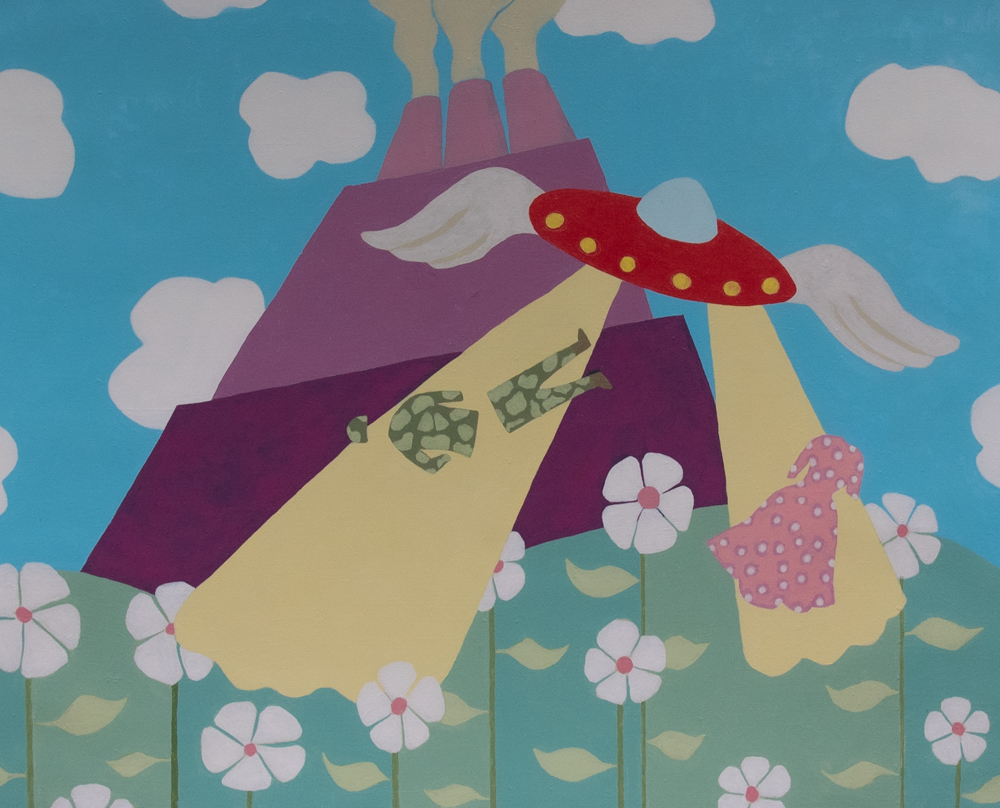
FP: Your experience is unique in that you began your transition at an older age. Are there any reflections on age you’d like to share?
PN: Starting this transition at age 70 has been both delirious flight and utter folly. But then, the best things in life are always like that. There’s a lot about transitioning that would be best done in youth, but making the leap in old age has many advantages. My spouse is very supportive, as are my adult children. I know many younger trans folks who have lost families and marriages. These relationships would have needed more and trickier negotiation 30 years ago. I’m retired, so I don’t have to worry about earning a living during the transformation. I know myself better today than I did when I was 20—well, everyone does—and can be more sure that I’m on the right track. Also, I’m transitioning from a 70-year-old male persona to a 70-year-old female one, and not trying to look like anything but that.
Like what you just read? Support Flagpole by making a donation today. Every dollar you give helps fund our ongoing mission to provide Athens with quality, independent journalism.
